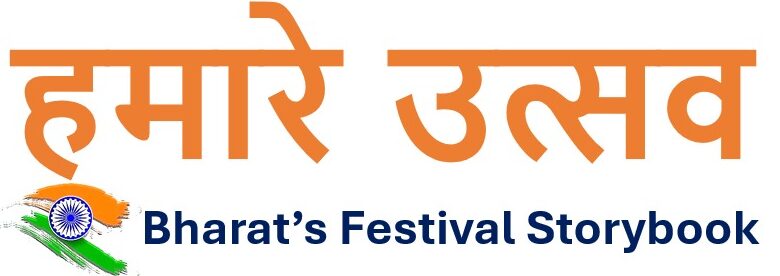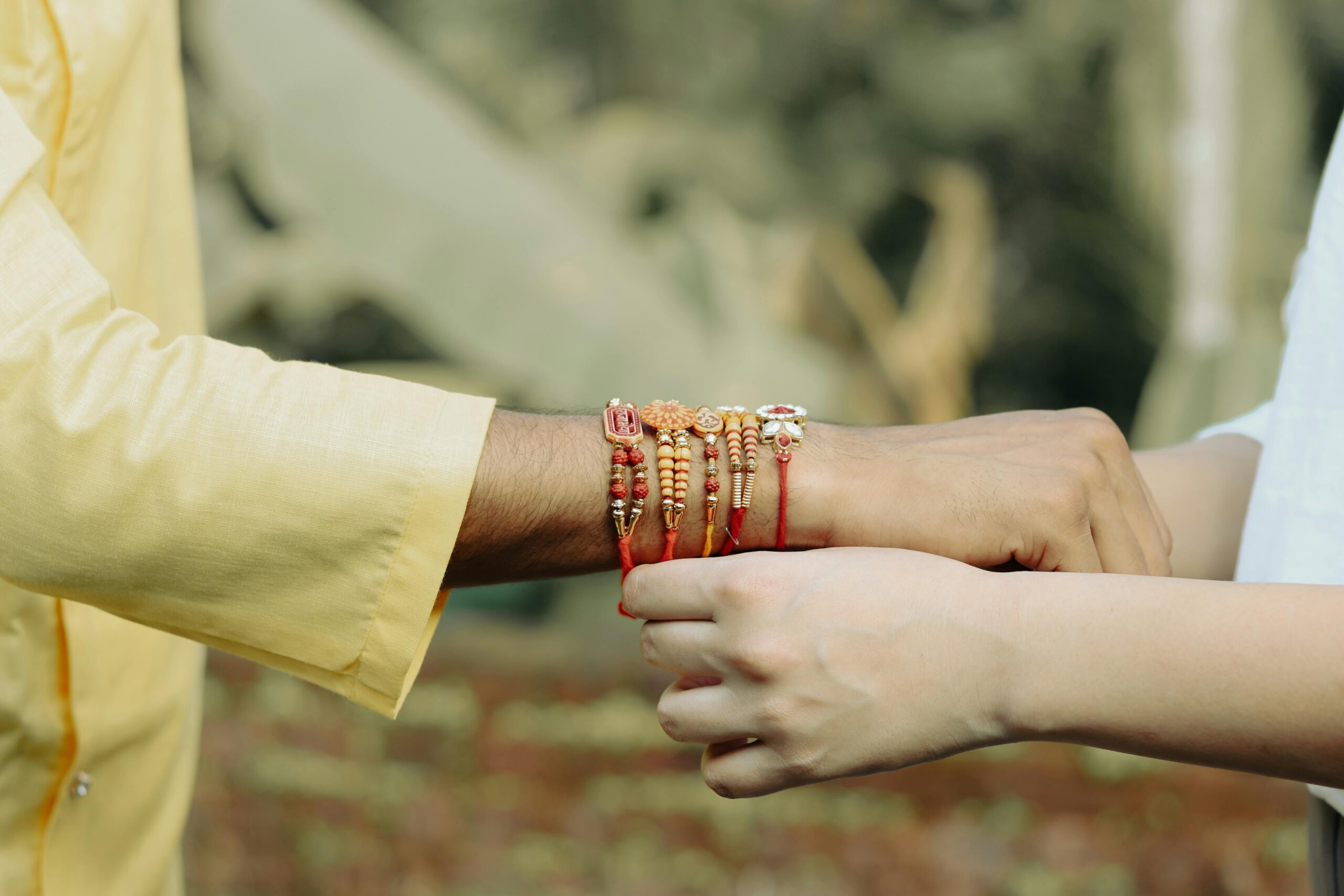Raksha Bandhan – a celebration of love, protection, and the unbreakable bond between siblings — has been woven into the cultural fabric of India for centuries. But where did it all begin? Is it just about tying a thread and exchanging gifts? Or is there a deeper meaning rooted in our history, mythology, and society?
In this blog, we trace the origin, evolution, rituals, and changing face of Raksha Bandhan from ancient times to the modern-day celebrations we see today.
🧵 What is Raksha Bandhan?
“Raksha Bandhan” is a Sanskrit phrase which literally translates to “the bond of protection“. The festival typically falls on the full moon day (Purnima) of the Shravan month (July–August) in the Hindu lunar calendar.
On this day, a sister ties a sacred thread (rakhi) around her brother’s wrist and prays for his long life and happiness. In return, the brother promises to protect her and often gives her a gift as a token of love.
But beyond this simple ritual lies a treasure trove of myths, legends, and social meaning.
📜 Raksha Bandhan in Indian Mythology
Let’s explore some of the most powerful stories from epics and historical texts where Raksha Bandhan found its symbolic meaning:
1. Draupadi and Lord Krishna (Mahabharata)
Perhaps the most famous legend:
- Once, Krishna cut his finger during battle.
- Draupadi tore a piece of her saree and tied it around his wound.
- Moved by her gesture, Krishna vowed to protect her forever — and he did, during the disrobing (Vastra Haran) incident in the Kaurava court.
This act of tying a cloth became symbolic of a sister’s unconditional love and the divine promise of protection.
2. Indra and Sachi (Bhavishya Purana)
- During a battle between gods and demons, Indra was losing.
- His wife Sachi tied a sacred thread (raksha) on his wrist and prayed for his protection.
- Empowered by the blessings, Indra returned to war and emerged victorious.
Though not a sibling bond, this showed how a sacred thread tied with faith had the power to protect.
3. Yama and Yamuna
- Yamuna, the sister of Yama (God of Death), tied him a rakhi and offered love and hospitality.
- Yama was so touched that he declared any brother who receives a rakhi and promises protection would be blessed with immortality and prosperity.
This story emphasizes the spiritual dimension of sibling love — eternal and divine.
4. Rani Karnavati and Emperor Humayun
One of the earliest historical references:
- During medieval India, Rani Karnavati of Mewar sent a rakhi to Humayun, the Mughal emperor, seeking protection against Bahadur Shah.
- Honoring the sentiment, Humayun rushed to her aid — though he arrived late, this tale became a symbol of rakhi transcending religion and politics.
🏛️ Raksha Bandhan Through the Ages
| Era | Observance |
|---|---|
| Vedic Period | Sacred protection thread tied during Yagyas & wars |
| Medieval India | Symbol of political alliance, respect between rulers |
| British Era | Used by freedom fighters like Rabindranath Tagore to promote Hindu-Muslim unity |
| Modern India | Popular household festival celebrating sibling love, now expanded to cousins, friends, even soldiers |
🎊 Rituals and Traditions of Raksha Bandhan
Each household may have its own customs, but the core rituals typically include:
- Puja Thali Preparation
The thali includes a rakhi, rice grains (akshat), kumkum (vermilion), sweets, and a diya. - Tying the Rakhi
The sister ties the rakhi on the brother’s right wrist, does aarti, applies tilak, and offers sweets. - Brother’s Promise and Gift
He vows to protect her and often gives a gift or money in return. - Family Feasting
Delicious home-cooked meals, traditional sweets like laddoos, barfis, and joyful laughter make the day complete.
👨👩👧👦 Changing Face of Rakhi in Modern Times
Today, Raksha Bandhan has evolved far beyond just a sister-brother ritual.
✨ Celebrated Between:
- Cousins: Expanding familial ties.
- Sister-to-Sister / Brother-to-Brother: Celebrating love and protection irrespective of gender roles.
- Friends: A mark of platonic loyalty.
- Soldiers & Civilians: Many women send rakhis to Indian jawans as a gesture of gratitude.
- Teachers, Social Figures: Rakhi as a symbol of respect and honor.
📦 Commercial & Digital Influence
- E-commerce platforms have popularized personalized rakhis, hampers, and one-day deliveries.
- Rakhi via post and virtual rakhis have gained traction, especially among siblings living abroad.
🌍 Raksha Bandhan Across Borders
- Celebrated in Nepal (as Janai Purnima), Mauritius, Fiji, and among Indian diaspora globally.
- Even non-Indians embrace it for its beautiful emotion and ritualistic warmth.
🌱 Eco-Friendly & Meaningful Rakhi Trends
In recent years, people are opting for:
- Plantable rakhis (made from seeds)
- Handcrafted, local artisan-made rakhis
- Themed rakhis (e.g., cartoon characters, sustainability, quotes)
- Charity-linked gifts where proceeds go to a cause
These trends reflect how the festival is adapting to conscious consumerism and deeper meaning.
🎁 The Emotional Core of Raksha Bandhan
Despite its evolving forms, one thing remains eternal:
✨ “Raksha Bandhan is not just about protection, it is about presence.” ✨
It’s the thread that reminds us:
- To express love before it’s too late
- To honor relationships despite distance
- To celebrate the people who’ve had your back — always
🙌 Final Thoughts: Why We Celebrate It Even Today
In a world increasingly fast-paced and digital, Raksha Bandhan slows us down — even if just for a day — to feel, to thank, and to love.
Whether you tie a rakhi to your brother, cousin, friend, or soldier — it’s the sentiment of care and commitment that truly matters.
💡 Coming Soon on Humare Utsav:
- 🎁 Top 10 Rakhi Gifts Under ₹500
- 📖 Rakhi Caption Ideas for Instagram
- 🪢 How to Make Handmade Rakhis at Home
- 🍬 Quick Sweet Recipes for Raksha Bandhan
💬 What’s Your Favorite Rakhi Memory?
Share your story in the comments or tag us on Instagram @humareutsav with #RakhiWithUtsav

